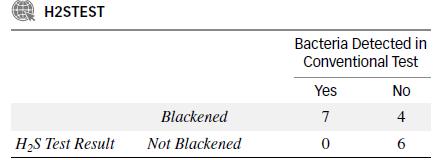Refer to the Disasters (Vol. 28, 2004) study of the effects of a tropical cyclone on the
Question:
Refer to the Disasters (Vol. 28, 2004) study of the effects of a tropical cyclone on the quality of drinking water on a remote Pacific island, Exercise 1.11. One part of the study evaluated the usefulness of a simple paper-strip, hydrogen sulphide (H2S) test kit for water quality in determining the presence of fecal bacteria. Each in a sample of 17 water specimens (size 500 milliliters) obtained 3 days after Cyclone Ami hit the island was tested for fecal bacteria. Both the conventional fecal coliform test and the simple H2S test were applied to each water specimen. The test results are summarized in the table.

a. Explain why Fisher’s exact test should be used to determine whether the H2S test result depends on whether or not bacteria is present in the water specimen.
b. Construct all possible contingency tables with the same marginal totals as the observed table.
c. Use the hypergeometric formula to find the probability of each of the tables, part b, occurring. Identify the tables that have probabilities less than or equal to the probability of the observed table.
d. Sum the hypergeometric probabilities of the tables identified in part c. This sum represents the p-value of Fisher’s exact test.
e. The researchers conclude that “the H2S test showed good agreement with the conventional fecal coliform test.” Do you agree? Test using α = .10.
Data from Exercise 1.11
Disasters (Vol. 28, 2004) published a study of the effects of a tropical cyclone on the quality of drinking water on a remote Pacific island. Water samples (size 500 milliliters) were collected approximately 4 weeks after Cyclone Ami hit the island. The following variables were recorded for each water sample. Identify each variable as quantitative or qualitative.
Step by Step Answer:

Statistics For Engineering And The Sciences
ISBN: 9781498728850
6th Edition
Authors: William M. Mendenhall, Terry L. Sincich





